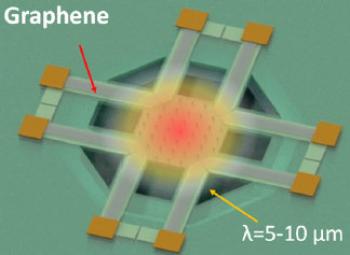Researchers from Massachusetts Institute of Technology, Harvard, University of California Riveriside and US Army Research Laboratory have integrated graphene with silicon microelectromechanical systems (MEMS) to make a flexible, transparent, and low-cost device for the mid-infrared range.

Tests showed it could be used to detect a person’s heat signature at room temperature (300 K or 27 degrees C/80 degrees F) without cryogenic cooling, which is normally required to filter out background radiation, or noise, to create a reliable image (which complicates the design and adds to the cost and the unit’s bulkiness and rigidity).
The researchers say that in the future, a thermal sensor could be based on a single layer of graphene, which would make it both transparent and flexible. Also, manufacturing could be simplified, which would bring costs down.
Source: kurzweilai